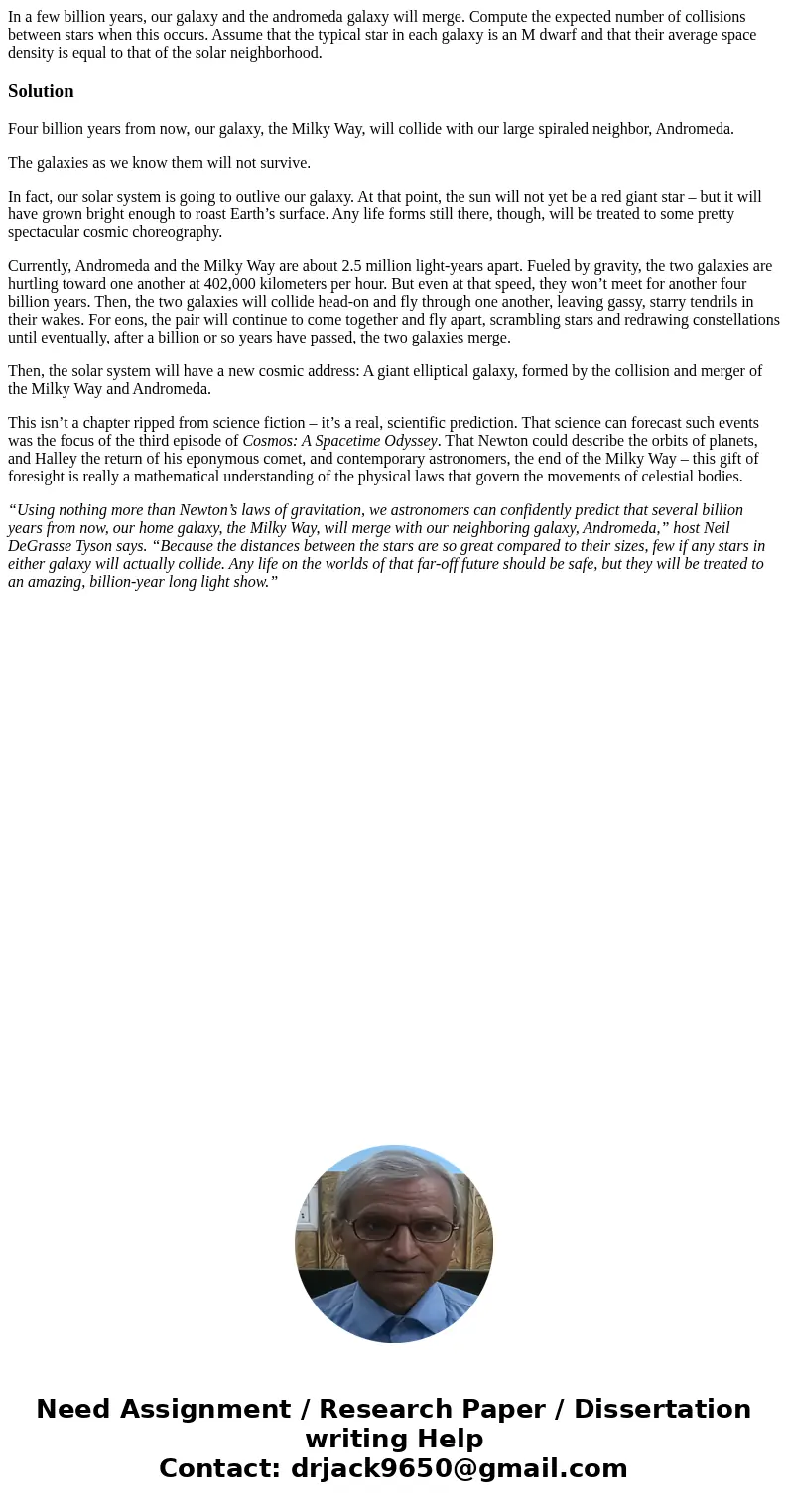In a few billion years our galaxy and the andromeda galaxy w
In a few billion years, our galaxy and the andromeda galaxy will merge. Compute the expected number of collisions between stars when this occurs. Assume that the typical star in each galaxy is an M dwarf and that their average space density is equal to that of the solar neighborhood.
Solution
Four billion years from now, our galaxy, the Milky Way, will collide with our large spiraled neighbor, Andromeda.
The galaxies as we know them will not survive.
In fact, our solar system is going to outlive our galaxy. At that point, the sun will not yet be a red giant star – but it will have grown bright enough to roast Earth’s surface. Any life forms still there, though, will be treated to some pretty spectacular cosmic choreography.
Currently, Andromeda and the Milky Way are about 2.5 million light-years apart. Fueled by gravity, the two galaxies are hurtling toward one another at 402,000 kilometers per hour. But even at that speed, they won’t meet for another four billion years. Then, the two galaxies will collide head-on and fly through one another, leaving gassy, starry tendrils in their wakes. For eons, the pair will continue to come together and fly apart, scrambling stars and redrawing constellations until eventually, after a billion or so years have passed, the two galaxies merge.
Then, the solar system will have a new cosmic address: A giant elliptical galaxy, formed by the collision and merger of the Milky Way and Andromeda.
This isn’t a chapter ripped from science fiction – it’s a real, scientific prediction. That science can forecast such events was the focus of the third episode of Cosmos: A Spacetime Odyssey. That Newton could describe the orbits of planets, and Halley the return of his eponymous comet, and contemporary astronomers, the end of the Milky Way – this gift of foresight is really a mathematical understanding of the physical laws that govern the movements of celestial bodies.
“Using nothing more than Newton’s laws of gravitation, we astronomers can confidently predict that several billion years from now, our home galaxy, the Milky Way, will merge with our neighboring galaxy, Andromeda,” host Neil DeGrasse Tyson says. “Because the distances between the stars are so great compared to their sizes, few if any stars in either galaxy will actually collide. Any life on the worlds of that far-off future should be safe, but they will be treated to an amazing, billion-year long light show.”

 Homework Sourse
Homework Sourse